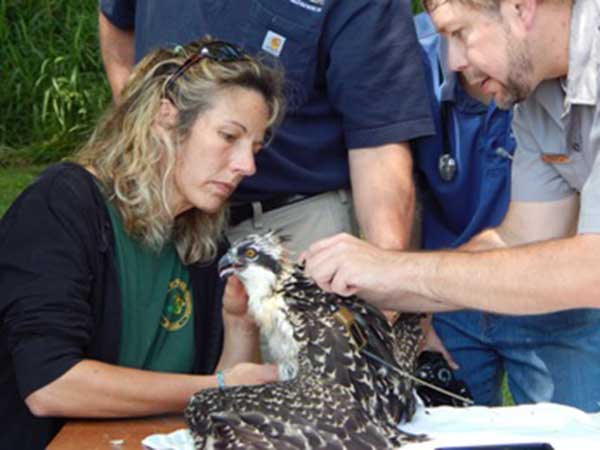- Details
The Michigan DNR will offer free tours to the public and school groups this fall at the Boardman River Weir (in downtown Traverse City), the Little Manistee River Weir (in Manistee County) and the Platte River Weir (in Benzie County). Tours are available throughout September and October.
Weirs are dam-like structures that block upstream fish passage on a river. A weir is used on the Boardman River each fall by the DNR to harvest Chinook and coho salmon that would otherwise create significant river congestion between Union and Sabin dams. One is used on the Little Manistee River at the same time to harvest Chinook salmon to support the DNRís fish production efforts.
Tours are being offered this fall at the Boardman River, Little Manistee River and Platte River weirs by staff from the DNRís Fisheries Division, Carl T. Johnson Hunt and Fish Center and Wolf Lake State Fish Hatchery. Students and visitors will learn all about salmon, how weirs and fish ladders work, invasive species, state fish hatcheries, and the DNRís annual egg-collection efforts and their impact on Michiganís fisheries. The programs tie in components of history, ecology, biology and stewardship.
- Details
Young hunters, ages 16 and under, will once again have the opportunity to get a free junior deer hunting license at all Meijer stores in Michigan on Sept. 12 and 13.
Youths must be accompanied by an adult, and should print out and bring the free junior hunting license coupon or mPerks digital coupon to the store's sporting goods department.
- Details
(Provided by Michigan DNR)
The Michigan DNR now has a third official Michigan online hunter education course available at www.hunteredcourse.com/state/michigan.
A Michigan-based company, Hunter Ed Course offers its online hunter education course for $17.99. The course features lessons on safe, legal and responsible hunting practices and uses narration, closed captioning, interactive exercises and photos that replicate what a hunter will see in the field.
- Details
(Provided by Michigan DNR)
The Michigan DNR has announced the DNR Fisheries Division and tribal partners stocked more than 4.8 million walleye fingerlings in more than 90 water bodies located throughout Michigan this spring and summer.
Walleye ponds are a critical component of the DNRís coolwater fisheries management and have been used extensively since the mid-1970s. More than 20 walleye pondsthroughout Michigan were used this year and most rely heavily on the support of local sportsmen's organizations, whichassist with the pondsí finances and supply volunteers to help with fertilization, pond maintenance and fish harvest.
- Details
(Provided by Michigan DNR)
 The Michigan DNR's Julie Oakes and USDA Wildlife Services' Brian Washburn outfit an osprey chick with a GPS Nearly absent from much of the state due to the effects of DDT and other pesticides and habitat loss, ospreys continue to rebound in Michigan. In southern Michigan, monitoring efforts are tracking the revitalization of this species.
The Michigan DNR's Julie Oakes and USDA Wildlife Services' Brian Washburn outfit an osprey chick with a GPS Nearly absent from much of the state due to the effects of DDT and other pesticides and habitat loss, ospreys continue to rebound in Michigan. In southern Michigan, monitoring efforts are tracking the revitalization of this species.
Six osprey chicks from area nests were outfitted this year with "backpack" satellite and GSM telemetry units. These units ñ funded by grants from DTE Energy, Huron Valley Audubon, photographer Lou Waldock, U.S. Department of Agriculture Wildlife Services and American Tower Corporation ñ will help scientists track the young birds' daily movements and seasonal migration patterns.
In 2013, three osprey chicks were given GPS backpacks in southeast Michigan. One chick banded near Estral Beach migrated to Cuba. A chick from Kensington Metropark ventured to Colombia, and one from Pinckney found good fishing sites on a golf course in Miami.


